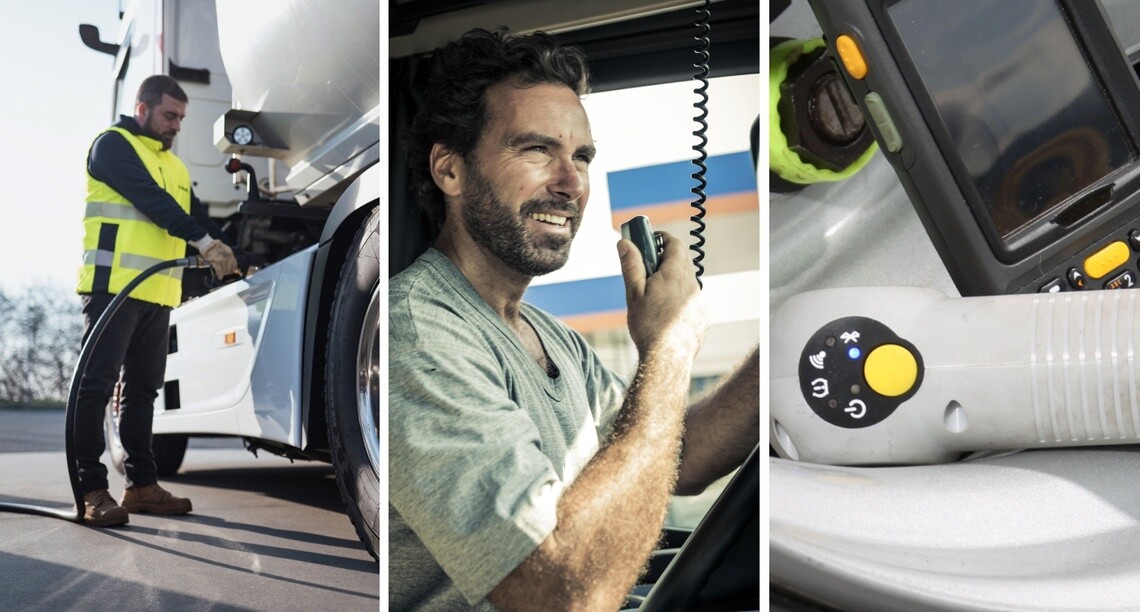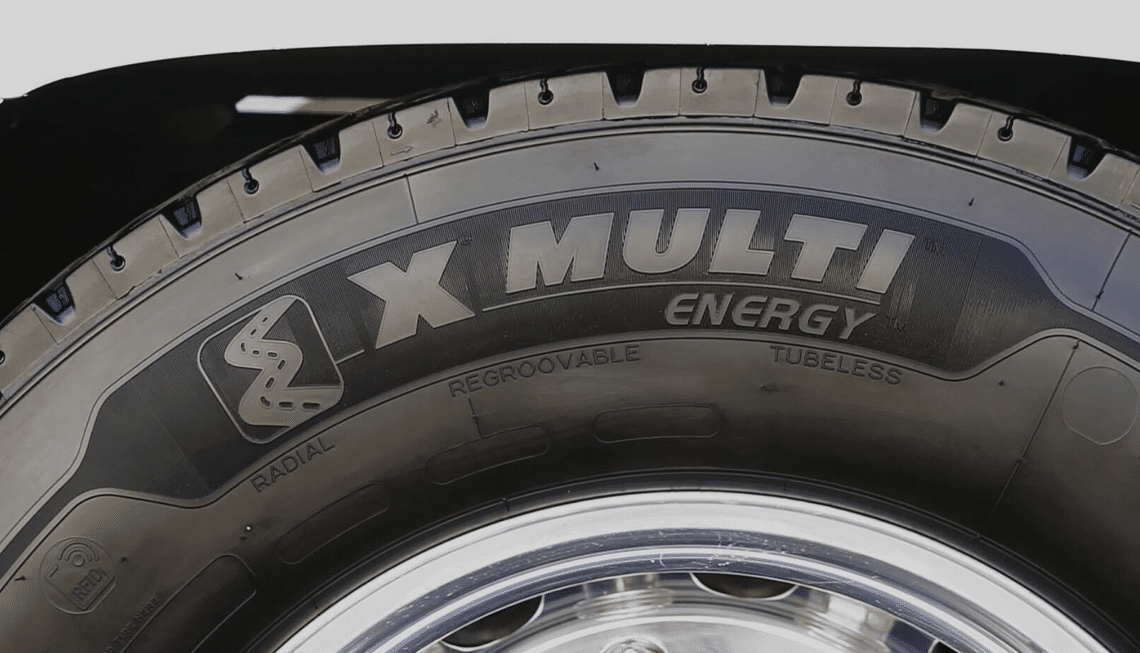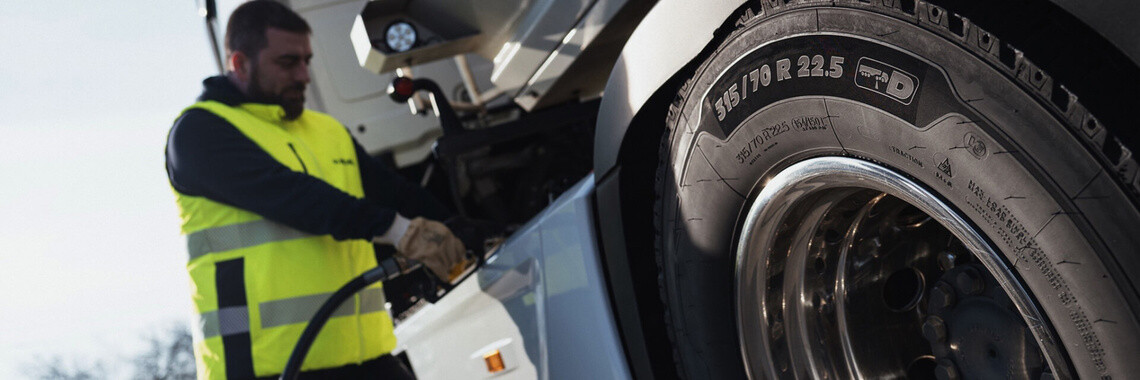
Fleet audit: unlock peak fleet performance
transporting freighting service company. commercial logistics delivery lorry trucks in row
In today’s competitive market, keeping your fleet operating at peak performance is more critical than ever. Fleet owners face challenges on all fronts—rising energy costs, stringent regulations, environmental concerns and even an ongoing driver shortage. Managing your fleet effectively requires a strategic approach ౼ but where should you begin? A fleet audit!

Improve your fleet performance by carefully choosing your fleet performance metrics
Portrait of a indian truck driver
Whether your goal is to enhance productivity, optimise on-time delivery, improve driver behaviour or boost vehicle performance, a fleet audit can provide the clarity you need. By identifying areas for improvement and prioritising the most critical actions, a fleet audit can help you adopt connected fleet solutions to lower operating costs or set up driver training programs to reduce fuel consumption.
Step 1: Every successful project starts with “SWOT”
Begin your fleet audit by identifying which aspects of your fleet operations require improvement or monitoring. The most impactful way to pinpoint these areas is through a SWOT analysis—a cornerstone of sound business strategy. This involves listing your fleet's Strengths, Weaknesses, Opportunities and Threats.
For instance, having top-of-the-line equipment is a strength, while frequent tyre blowouts over the past year highlight a weakness. Future-proofing your fleet with eco-friendly tyres or electric vehicles represents an opportunity, whereas losing drivers to competitors signals a threat. Take time to evaluate every facet of your operations. Once your SWOT analysis is complete, focus first on the weaknesses. Don’t be discouraged if your list is long —prioritise the most critical, high-impact issues and tackle those first.
From fleet audits meaning to measurable KPIs: define what matters
Once you've identified the area most in need of attention, establish Key Performance Indicators (KPIs) for fleet management. These measurable fleet performance metrics will track progress towards your goals. For example, if vehicle performance is your focus, relevant KPIs might include breakdown frequency, maintenance downtime or fuel consumption. Tracking the right KPIs is crucial for successful fleet management.

Key performance indicators to keep in mind for your fleet management
Step 2: Collect data, analyse and communicate to improve fleet efficiency
To set actionable goals for your fleet audit, you’ll need to collect reliable data and conduct fleet benchmarking, whether against industry standards or internal targets. If your fleet already uses a telematics system, leverage this data to monitor fleet performance metrics and guide decisions. For example, data-based preventive and predictive maintenance services can monitor every aspect of your truck’s performance non-stop to anticipate or even prevent breakdowns.
Data analysis can also reveal areas for improvement or urgent issues. For instance, if improving vehicle performance is your goal, analysis might show a recent uptick in maintenance downtime—a clear starting point for action. Wigan Council, a 320-vehicle fleet in North West England, saw significant improvements after analysing data collected by Michelin Connected Fleet, including a 29% reduction in engine idle time, improved driver behaviour and maximised vehicle utilisation1.
As soon as you have a plan in place, communicate with your fleet. Listening to, acting on and incorporating driver feedback into the fleet audit process will not only ensure that you address driver concerns, but it will help you optimise fleet operations for long-term success.
Step 3: Use your fleet management audit checklist to unlock quick fleet performance wins

Engage your drivers by showing them the fleet audit results in real time
Quick wins are an excellent way to get drivers engaged with the results of a fleet audit — seeing the benefits in real-time can be a powerful motivator.
Optimise fuel consumption
In today’s uncertain economic climate, managing your total cost of ownership (TCO) – especially with regards to fuel consumption – is often a top priority for fleet owners. Fortunately, there are simple, cost-effective strategies for optimising fuel use.
Make sure your drivers are mastering the right techniques
For starters, driver behaviour is one of the most significant factors influencing fuel efficiency. If your fleet audit identifies this as an area for improvement, consider investing in training drivers in fuel efficient driving techniques to promote best practices, driver safety, or implementing an incentive program to reward drivers who consistently meet or exceed fuel consumption targets.
Tap into telematics systems for fleet audits & inspections
Another practical approach involves incorporating telematics systems into your fleet. This technology provides reliable data to deal with critical issues such as eco-driving habits, tyre condition and overall vehicle health. By integrating a connected solution, you can achieve measurable improvements — such as a 3% to 4% reduction in fuel consumption2 — while gaining valuable insights to further optimise your fleet’s performance.
Step 4: Boost your fleet performance with tailor-made solutions
A fleet audit often uncovers key areas ripe for improvement, such as optimising tyre performance and selection. Addressing this issue can significantly enhance efficiency and cost savings. To support fleets with this goal, Michelin has developed a range of high-performance solutions.
Go further with energy-saving tyres
Energy-saving tyres are engineered to help fleets better manage fuel costs and energy consumption. For example, fitting MICHELIN X® MULTI ENERGY™ Z2 and D2 tyres, designed for long-haul and regional use, can generate up to 5% in fuel savings3 versus the previous generation product. This is on top of the potential for increased tyre longevity4 and significantly reduced rolling resistance5 — all key benefits for lowering overall operational costs.

03 discover the latest generation of energy saving tyres
Expect the unexpected with predictive maintenance
Alongside this, fleets can benefit from refining maintenance costs and practices. This includes implementing regular inspections to avoid costly breakdowns or adopting predictive maintenance systems. These can monitor engine performance, brake systems, transmission, suspension and axles and overall component deterioration and performance issues. Systems also encourage fleets to adopt proactive practices, such as tyre management, by monitoring factors like inflation pressures, temperature and wear ౼ which can reduce the likelihood of roadside incidents by 80%, lower fuel consumption and CO2 emissions by 3% and extend tyre lifespan by 9%6. In addition, integrating route optimisation software can further enhance efficiency. Streamlined routes not only save time, but can also lead to reduced stress for drivers and lower fuel consumption.
Make sure your fleet remains optimised today and tomorrow
Regular fleet audits are vital for fleet managers seeking to maintain a competitive edge, uncover inefficiencies and optimise operations. By continuously and quantitatively evaluating where your Strengths, Weaknesses, Opportunities and Threats lie ౼ and revisiting this analysis every year or so ౼ fleets can stay ahead of challenges and adapt to evolving demands.
Future-minded fleets are also exploring new trends in the transport ecosystem to boost efficiency. These include switching to a leasing model for HGVs to gain greater visibility on operating costs, lower maintenance expenses and enhance overall agility. Embracing resource sharing is another promising approach, with studies showing potential reductions in empty running on backhaul trips by as much as 15%7.
Michelin’s range of innovative connected solutions empowers fleets to drive further ౼ focusing on key concerns such as reducing costs, improving fuel economy and boosting sustainability.
Are you ready to take the next step in maximising your fleet's potential?
FAQs
A fleet audit is a structured evaluation of a company’s vehicle operations, aimed at assessing performance, safety, compliance, and cost-efficiency. It helps fleet managers prioritise actions, improve performance, reduce costs, and implement solutions like connected technologies or driver training programs.
Auditing fleet management involves collecting and analyzing data on vehicle usage, maintenance, fuel consumption, driver behavior, and compliance. This process typically uses a checklist or template to ensure all key performance indicators (KPIs) are reviewed and aligned with business goals.
1. https://connectedfleet.michelin.com/customer-stories/wigan-council/
2. Average of the results obtained by Michelin from a representative sample of 20 clients in 2022: "Minimum reduction in fuel consumption observed following 11 European MICHELIN Connected Fleet customer trials carried out across their entire truck fleets from 2019 to 2023."
3. MICHELIN X® Multi Energy 2 range +5% vs MICHELIN X® Multi range (internal calculations based on rolling resistance tyre test results & simulations)
4. Retreadability: High retreadability (highest acceptance rate in the market) & retread offer continuity for circularity (Remix X Multi Energy D2). Around 9 out of 10 MICHELIN casings are accepted for MICHELIN REMIX® retreading. More than 473,000 casings were examined between 2015 and 2018. Data collected in the UK by TRS, an independent UK casing recycler, with calculation of the retread acceptance rate based on casing brand for a first retread. Calculated by Michelin on the basis of this data as well as the number of end of first life casings considered acceptable for retreading by brand, divided by the number of end of first life casings.
5. MICHELIN X® Multi Energy 2 range +5% vs MICHELIN X® Multi range (internal calculations based on rolling resistance tyre test results & simulations)
6. https://connectedfleet.michelin.com/solution/predictive-tyre-maintenance/
7. Research Gate
“Impact of resource sharing of freight transportation.” Pg. 2. May 2014.
“The collaborative transportation in the wood industry in Norway showed the potential backhaul trips reduced by 15 percent the empty trucking distance and by 6 and 7 percent the transportation cost.”https://www.researchgate.net/publication/262901180_Impact_of_resource_sharing_of_freight_transportation

gettyimages 930571046
car going fast on a road by night






